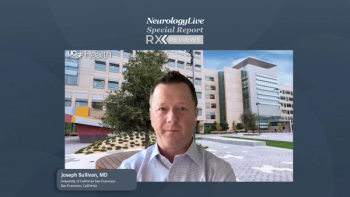
- February 2023
- Volume 6
- Issue 1
Seizure-Free Days and Duration Intervals Increased With Fenfluramine in Dravet Syndrome
In a recent time-to-event analysis based on two clinical trials of patients with Dravet syndrome results demonstrated an overall reduction in seizure burden with fenfluramine.
News from a recent post-hoc pooled analysis of two clinical trials (NCT02682927, NCT02826863) showed an increase in seizure-free days and increased duration of seizure-free intervals with antiseizure medication, fenfluramine (Fintepla; UCB Pharma), in patients with Dravet syndrome (DS).1 These findings suggest that there might be a dose-response to the treatment and that the quality of life for both caregivers and patients may improve.
All told, there was a significantly higher probability of not reaching the pre-randomization seizure count in both fenfluramine groups, fenfluramine 0.7 mg/kg/day (62.3%) and fenfluramine 0.2 mg/kg/day (35.3%), in comparison with the placebo group (9.1%)(both fenfluramine groups, P <.001).
These results were presented as a late-breaking poster at the 2022
The study was conducted as a time-to-event (TTE) analysis, an alternative to routinely used clinical trial endpoints, as a way to provide data on changes in seizure frequency. TTE was defined as the time required during the 14-week combined titration-maintenance period to experience the same number of convulsive seizures as experienced during the baseline period (Kaplan-Meier log-rank test). The participants were patients with DS, 2 to 18 years of age, with no pulmonary hypertension or cardiovascular or cerebrovascular disease history.
At baseline, the average number of convulsive seizures ranged from 22.0 to 28.5 and the average number of seizure-free days per 28 days ranged from 16.3 to 19.3 days. The seizure free days per 28 days with treatment were analyzed by ANCOVA, using age as factors. The log baseline seizure-free days per 28 days was a covariate and a response. The Wilcoxon rank sum test analyzed the longest convulsive seizure-free interval.
There was a 6-week period for the baseline on the number of convulsive seizures at pre-randomization. Patients (n = 261) were then randomized to the placebo (n = 88), fenfluramine 0.2 mg/kg/day (n = 85), or fenfluramine 0.7 mg/kg/day (n = 88), in addition to the participants’ regimen for standard of care. After two weeks of titration, participants maintained their assigned dose over the course of 12 weeks.
The increase in seizure-free days and duration intervals reduced the seizure burden that caregivers and patients experience physically and emotionally on a day-to-day basis, the study investigators noted. It also meant that patients will have a reduction in time where they experience loss of abilities or regression because of the high seizure burden.
Comparing previous research studies with the analysis on fenfluramine (NCT02682927, NCT02826863), patients treated with 0.7 mg/kg/day showed a 62.3% and 64.18% greater reduction in convulsive seizures over placebo (P <.0001). Notably, for individuals given 0.4 mg/kg/day and received a stiripentol-based treatment showed a 54.0% greater reduction in seizure frequency during treatment (NCT02926898).1
REFERENCES
1. Sullivan J, Specchio N, Devinsky O, et al. Time-to-Event Analysis to Measure Treatment of Fenfluramine Therapy: Pooled Analysis of Two Phase 3 Studies in Dravet Syndrome. Presented at: AES Annual Meeting; December 2-6, 2022; Nashville, TN, and virtual. Poster.
Articles in this issue
almost 3 years ago
Perspectives on Recent Advances in Alzheimer Diseasealmost 3 years ago
An Overview of Therapeutic Options for Amyotrophic Lateral Sclerosisalmost 3 years ago
Activation of NRF2 and FXN in Friedreich Ataxiaalmost 3 years ago
From “Diagnose and Adiós” to Brain Health: Are We There Yet?Newsletter
Keep your finger on the pulse of neurology—subscribe to NeurologyLive for expert interviews, new data, and breakthrough treatment updates.



























